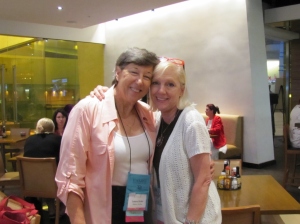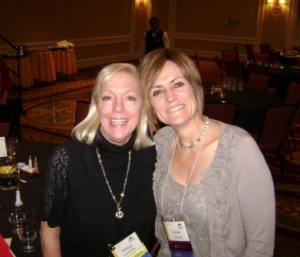
From CBS.com
by Margie Lawson, @MargieLawson
If you watch NCIS, you know Jethro Gibbs, aka Mark Harmon, has rules. Fifty-plus rules. My next fifteen (or fifty) blogs will feature a different Margie-Rule for writers.
[Click here for Margie’s Rule #1:
Never Take Any Word for Granted.]
Margie’s Rule #2: Write the Hard Stuff: Facial Expressions
Write the hard stuff.
Those words sound harsh. Nobody wants to write the hard stuff. And writing fresh facial expressions is tough.
It’s easy to write a sigh. It’s easy to write a nod. It’s easy to have a character shake their head.
It’s easy to write eyebrows raising, lifting, lowering, wagging.
It’s easy to write eyes narrowing, widening, slitting, squinting, winking, rolling.
It’s not easy to write fresh facial expressions.
You may be thinking, why write fresh? What’s wrong with writing overused facial expressions? Everybody writes them.
Lots of writers use those overused phrases. Readers have read those phrases thousands of times.
But clichés are invitations to skim. The reader detaches from the read. They take a mini-break. They tune out of your story and tune into their real word.
For many agents and editors, clichés aren’t just invitations to skim. They stop reading.
I’m not the only writing expert who wants to kill most clichés. Every basic how-to book for writers cautions against using clichés. I’ll share ideas from several How-to-Write books.
Here’s what James V. Smith, Jr. said about clichés in YOU CAN WRITE A NOVEL. This is from his “YOU MIGHT BE AN AMATEUR IF” section.
You might be an amateur if you rely on clichés.
This item is obligatory for any writing handbook. Beware the automatic phrase, such as “white as snow” and “quiet as a mouse.” If your heroic character roars like a lion, she’d better be a lioness.
One of the books on my top ten how-to books for beginning writers is THE FIRST FIVE PAGES by Noah Lukeman. He has sixteen pages listed in the index that address something about clichés. He includes this caution in chapter one:
I can’t tell you how many manuscripts either open with clichés or have one on their first page. This is almost always a sure indicator of a commonplace sensibility and will thus lead to instant rejection.
Trust the writing experts. Avoid clichés. Push yourself to write fresh.
All the examples in this blog are from Margie-grads. Enjoy!
Blaze, Joan Swan, multi-Margie-grad, 3 time Immersion-grad
For an extended second his eyes remained steady and unblinking on her face. A deep vertical line pulled between his brows, as if someone had smacked him upside the head and he hadn’t quite recovered.
When she looked up, Owen’s expression held a mixture of decades-old emotions that stirred her heart and her libido.
Dirty Magic, Jaye Wells, multi-Margie-grad, 2 time Immersion-grad
Gardner’s expression went tense, like she’d hoped I would have forgotten about that. When he finally looked up, his eyes were shiny and red-rimmed.
His smile transformed his face from boyish to almost-mannish.
Sweet on You, Laura Drake, to be released August, 2014, multi-Margie-grad, Immersion-grad

Margie Lawson and Laura Drake ~ RWA Nationals 2013
Her expression in the mirror looked familiar for the first time in weeks. She looked like a soldier; determined, tough, and ready.
The Cam in front of the cameras looked so different than the Cam she was getting to know. His face was closed, carefully composed. A Cool Hand Cahill mask.
Her lips attempted a smile, but her eyes didn’t bother.
Two Paragraphs:
He opened his eyes and studied her face. Her lips taut, her eyes cool, shuttered, and professional. And that hurt. “Will you have dinner with me tonight?”
Her look lasered to a hawk’s predatory gaze. No cool there now.
Dare You To, Katie McGarry, multi-Margie-Grad
Beth’s face explodes into this radiant smile and her blue eyes shine like the sun. My insides melt. This moment is special and I don’t want to let it go. I’m the one that put that look there.
From over his shoulder, Dad indicates I should join them by giving me one of his rare I’m-proud-of-you smiles. It makes me unbalanced.
Mom shifts in her seat like a crow fluffing out its wings. The only thing she’s missing is the pissed-off caw.
Find Me, Romily Bernard, Golden Heart Winner, and multi-Margie-grad
“That’s good. That’s good.” Bren’s nodding hard enough to knock something loose.
Everyone else is talking and crying, but Tally’s motionless, staring at me like I’m the only person who has ever mattered. Like I’m a hero.
The Last Breath (MIRA), Kimberly Belle, to be released Sept. 30, 2014, multi-Margie-grad, 4-time Immersion-grad
A smile slides up Jake’s face and settles in. It’s a magnetic, no-holds-barred smile, a smile that’s fierce and undeniably sexy, a smile that tugs and tingles somewhere deep and low in my belly.
Now Cal doesn’t bother hiding his surprise, or his fury. His neutral expression mushrooms into something livid and then clenches. Slammed brows, squeezed lips.
The realization slams him back onto his seat and sobers his expression more thoroughly than ten double espressos.
I watch as every emotion I feared most competes on Jake’s face. Grief, disgust, hatred, despair.
Kennedy Ryan, When You Are Mine, to be released June 17, 2014, multi-Margie-grad, Immersion-grad
Kerris’s smile played tug-of-war with her sad eyes.
The smile Kerris pushed onto her lips felt like a too-tight sweater.
Walsh flashed a smile he’d been cultivating in expensive schools and exclusive parties since he was twelve years old, hoping no one was the wiser.
Two Paragraphs:
“Walsh,” his mother said from the head of the table a few feet north of him and Sofie. “Will you open the dancing with me?”
Walsh lobbed a silent yes-get-me-out-of-this expression to his mother. She returned with a mama-always-knows smile.
I’m so impressed with my Margie-grads. Stellar writing!
If you some of these examples grabbed you, tweet or Fb the authors, and post a comment below. They’ll all stop by the blog. Let them know they wowed you!
One more point about clichés. Reviewers notice clichés too.
I’ll share the last sentences from two reviews. They’re for different books, by different authors. One is from Publisher’s Weekly, one is from Kirkus.
The last sentence from one review:
Clichés roll past like tumbleweeds on the prairie.
The last sentence from the other review:
(Author’s name) message gets buried in a sludge pile of clichés.
AACK!
You do not want anyone reviewing your book to mention clichés!
I hope you all dig deep and write the hard stuff.
If you feel stuck, consider the lecture packet for the third in my Big Three writing craft courses: Writing Body Language and Dialogue Cues Like a Psychologist. I teach that online course next March. That’s why the lecture packets are available through Paypal from my website.
You’ll find loads of teaching points and examples in my lectures. You’ll learn how to write body language and dialogue cues fresh, and it won’t seem so hard.
The more you write fresh, the easier it becomes. The more you write fresh, the stronger your writing.
BLOG GUESTS: NOW IT’S YOUR TURN!
Post a comment and you could win an online course from Lawson Writer’s Academy!
Check out the courses we’re offering in June:
1. Character-Themed Writing — Instructor: Elizabeth Essex
2. Love Your Voice — Instructor: Julie Rowe
3. From blah to beats: Giving Your Chapter a Pulse — Instructor: Rhay Christou
Due to my travel schedule to present at a university, at writing conferences, and teach six Immersion classes across the U.S. this summer, the next online class I’m teaching is in August: Visceral Rules: Beyond Hammering Hearts.

Margie Lawson with Brenda Novak at the CG Conference
Please check out my three donations on Brenda Novak’s Diabetes Auction.
http://bit.ly/BidOnImmersion
1. Twelve Months of Online Courses from Lawson Writer’s Academy — $600 value
2. Margie Lawson’s 50 Page Triple Pass Deep Edit — $350 value
3. Immersion Master Class, Lodging, and Two Bonus Days with Margie Lawson! — $1550 value
Thank you!
See you on the blog!
All smiles…………….Margie
p.s. No you haven’t imagined it…we have an extra post for you this week as a thank you (in advance) for helping us transition to our new site next week!
IMPORTANT REMINDER
** Writers In The Storm is getting a makeover! **
We’re moving to our new digs June 2nd. Stay tuned for party news (and giveaways)…
* * * * * *
About Margie
 Margie Lawson —psychotherapist, editor, and international presenter – teaches writers how to use her psychologically-based editing systems and deep editing techniques to create page turners. Margie has presented over eighty full day master classes in the U.S., Canada, Australia, and New Zealand. Writers credit her innovative deep editing approaches with taking their writing several levels higher—to publication, awards, and bestseller lists.
Margie Lawson —psychotherapist, editor, and international presenter – teaches writers how to use her psychologically-based editing systems and deep editing techniques to create page turners. Margie has presented over eighty full day master classes in the U.S., Canada, Australia, and New Zealand. Writers credit her innovative deep editing approaches with taking their writing several levels higher—to publication, awards, and bestseller lists.
To learn about Lawson Writer’s Academy, Margie’s 4-day Immersion Master Classes (in Colorado, Atlanta, Philadelphia, Dallas, Seattle, San Antonio, Houston, and on Whidbey Island), her full day Master Class presentations, keynote speeches, on-line courses, lecture packets, and newsletter, please visit www.MargieLawson.com.











